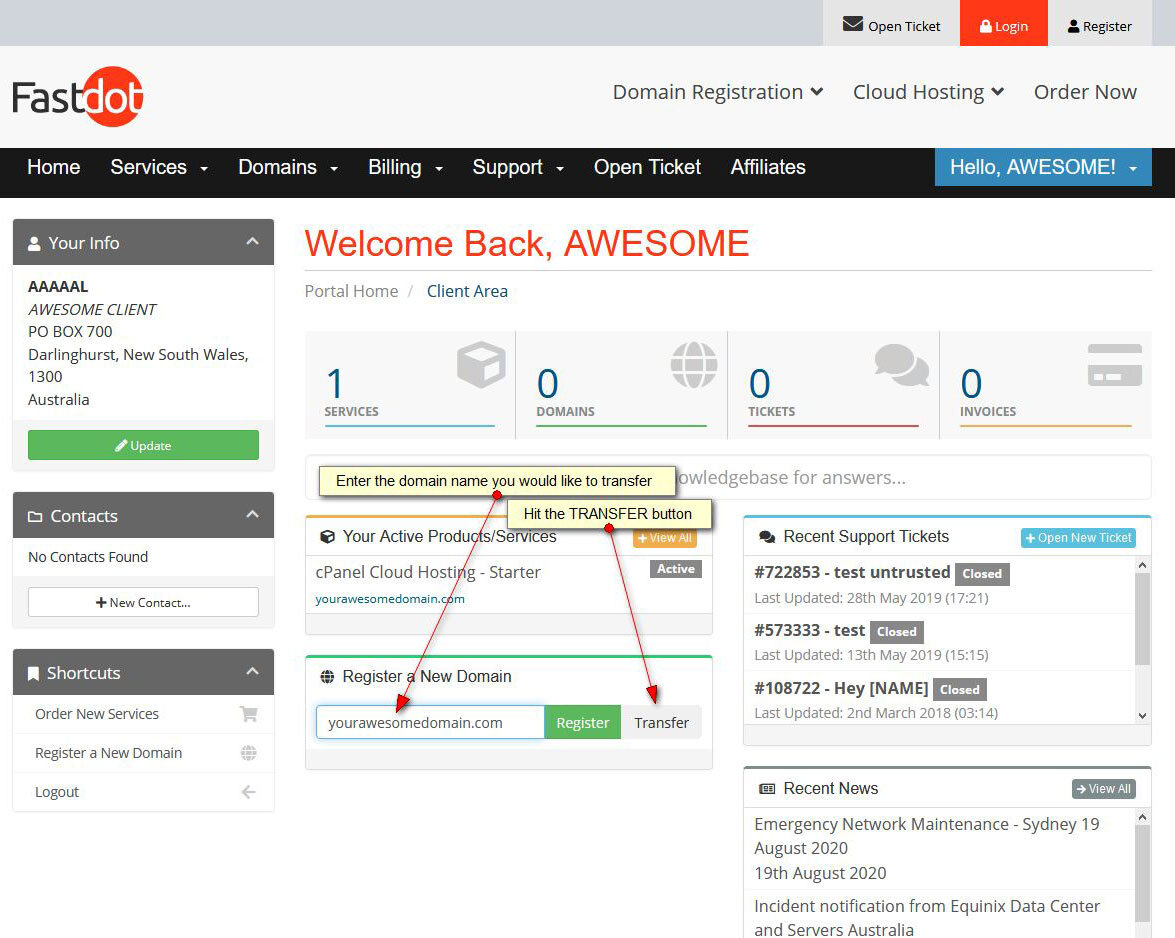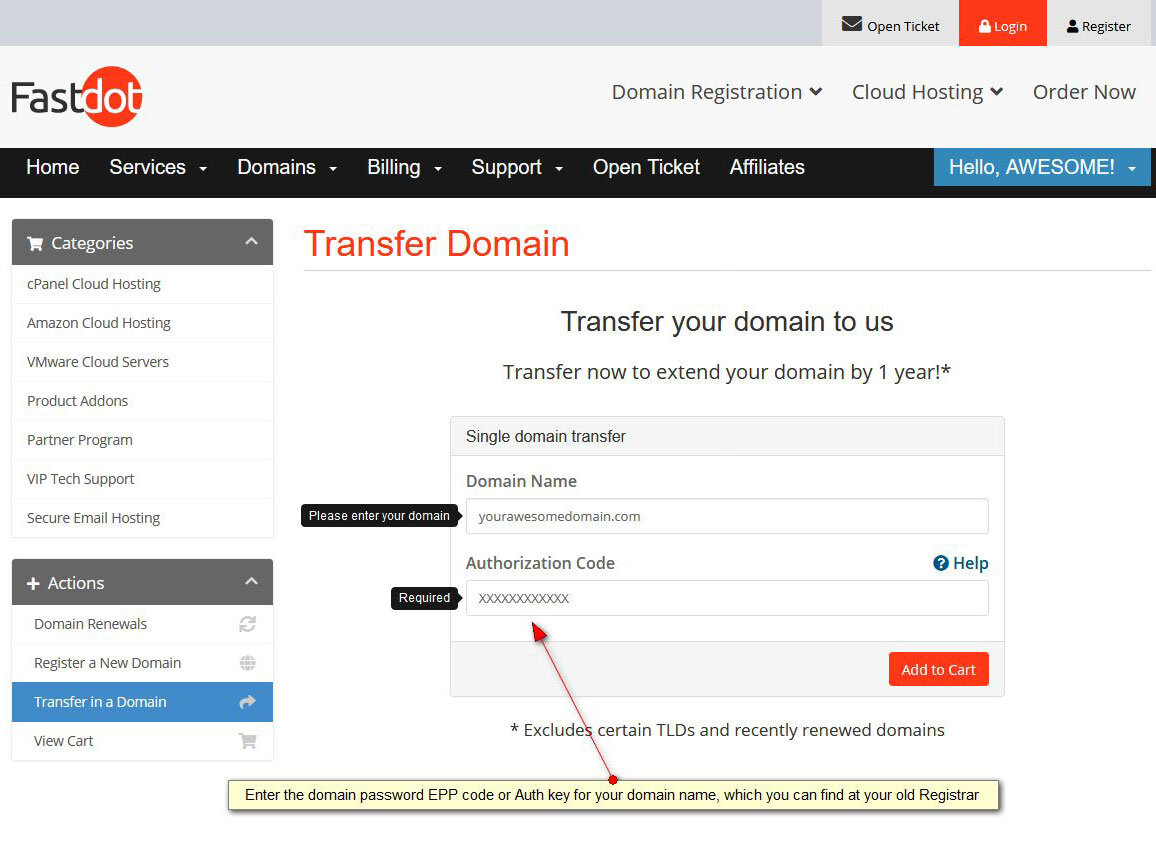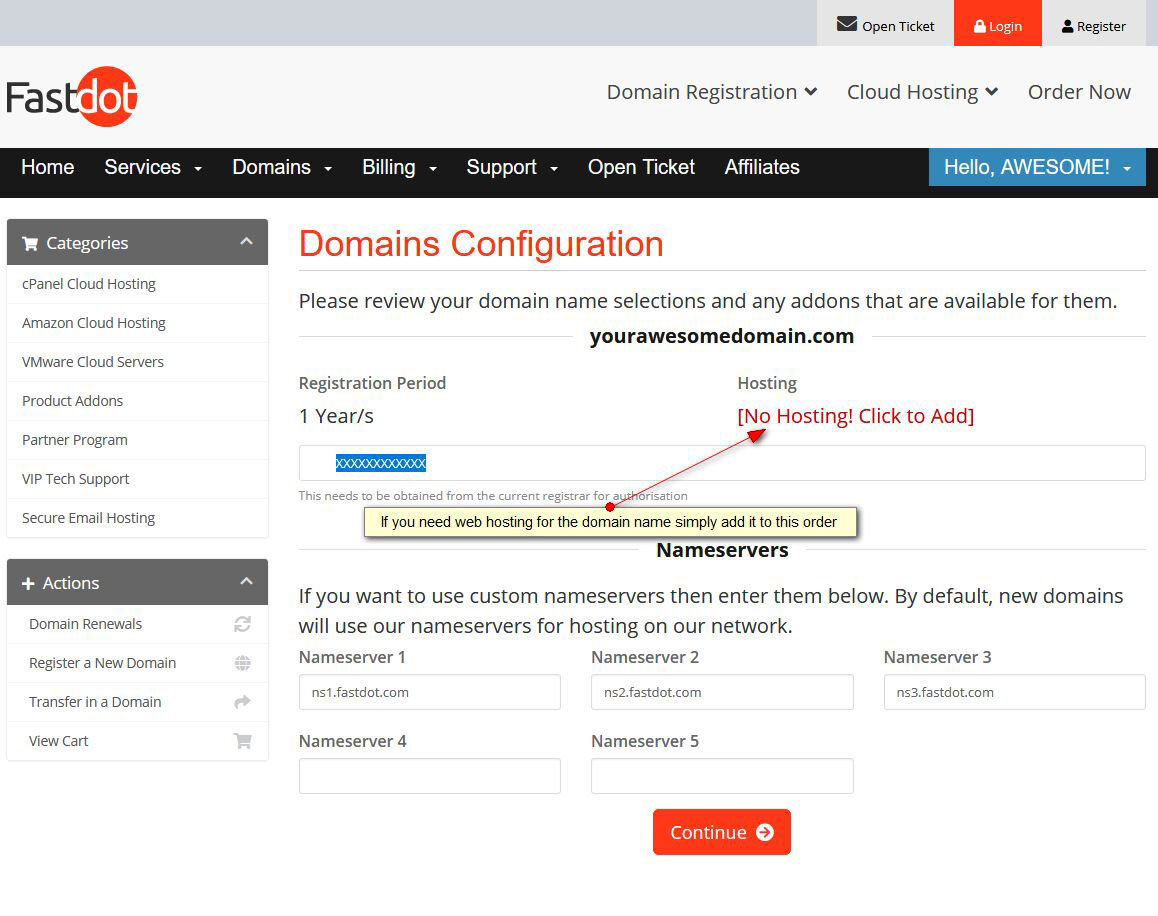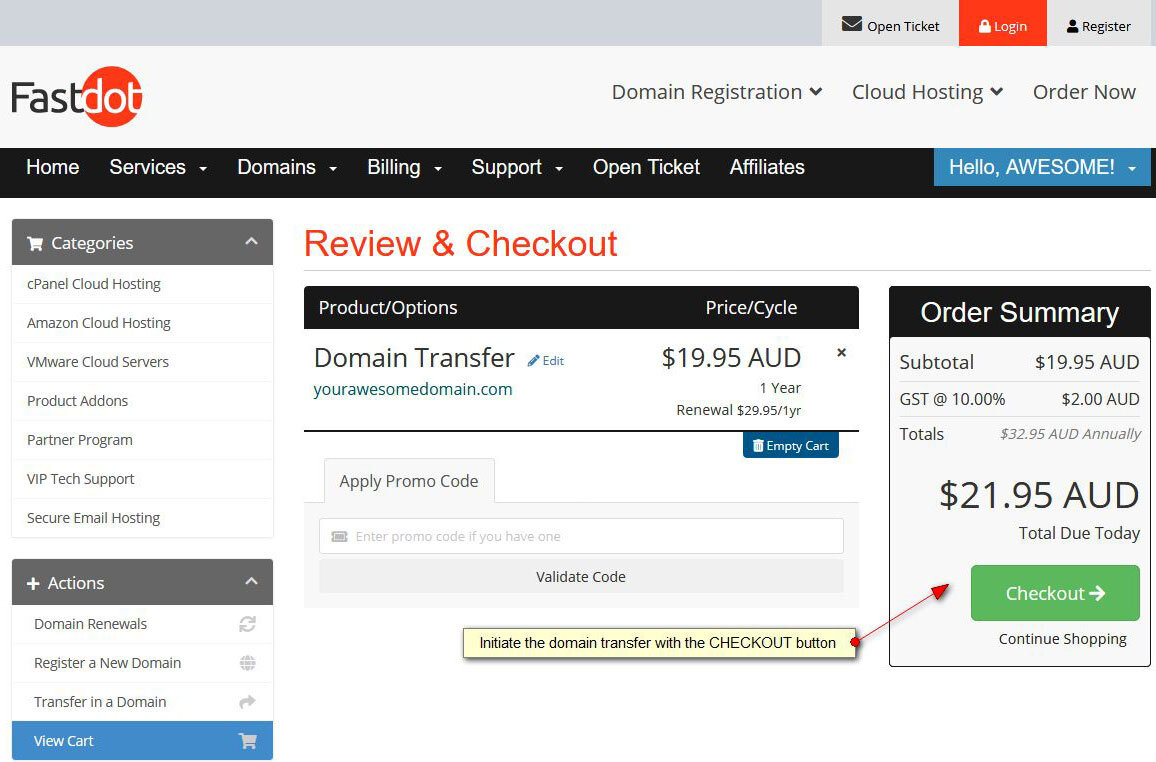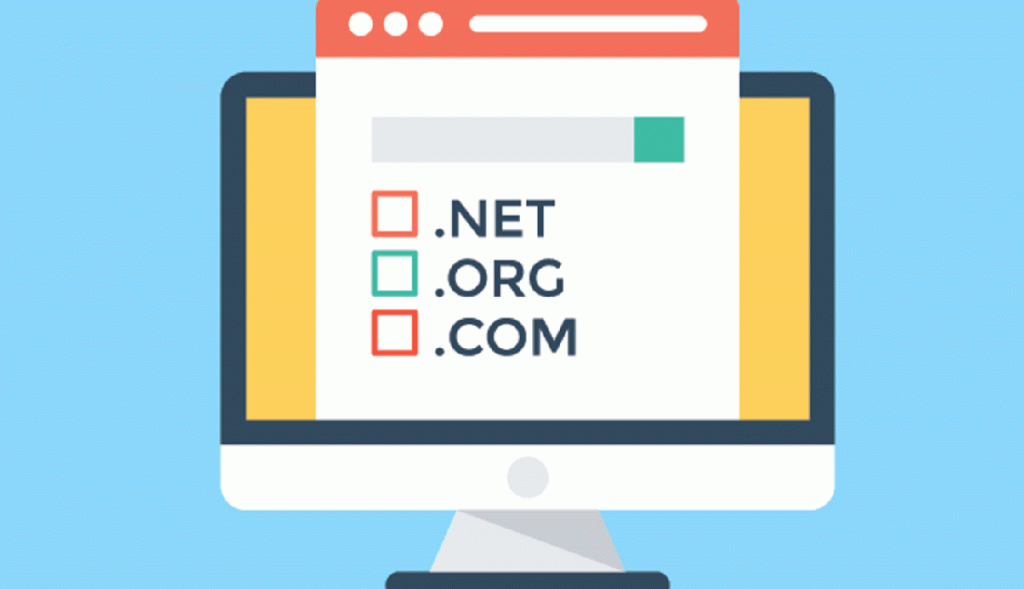Transfer your Domain to Fastdot!
Transferring your domain name to Fastdot is extremely fast and easy to do. You can follow our step-by-step guide on how to transfer your domain, or begin the transfer process to Fastdot immediately!
If it seems a little to complicated or overwhelming we can also perform the transfer for you, simply open a support request in the Fastdot Client Area
Domain Transfer Tutorial
Follow the steps below to get started.
- Firstly, make sure we can reach you on your existing domains contact email and disable domain privacy. You should be able to update or change this information at your current or old domain registrar. Also make sure your domain name is unlocked!
- Once you are sure all the contact details are correct and your domain name is unlocked, simply log into your Client Area and enter your the domain you like to transfer (without the www) into the field , and select Transfer.
Enter the domain password EPP code or Auth code for your domain.
This is obtainable via your current domain provider. If you don’t know where to find the EPP code, simply check the FAQ at the end of this tutorial.
Order Web Hosting
If you need web hosting for this domain , simply add it to this solution during the domain name transfer process
Review and checkout:
Select Checkout to proceed with the domain transfer process
Domain Name Registration or Transfer
Find EPP Code for Generic TLD’s (.com, .net, .org .. )
- Go to whois.sc (external link)
- In the first text field, enter your domain name and click the orange magnifying glass.
- Next, select the Registration tab.
- In the Registration Tab, next to ICANN Registrar, you will find your current domain registrar’s name.
Find EPP Code for Australian gTLD (.com.au, .net.au, .org.au ..)
- Firstly, ensure that your domain has domain privacy disabled, and the email address attached to your domain is active. This is where your domains EPP code will be sent.
- Go to AUDA at https://pw.auda.org.au/
- Enter your domain name (without the www) in the first text field
- In the second text field called "Requestor Name", enter the domain owners name.
- Select the Recover button
- Your domains EPP code will arrive via email shortly

